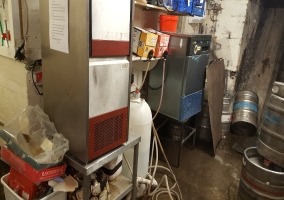
If you drink in pubs, it is likely that you have had a beer that you were unhappy with. It may have looked or tasted wrong, or even been undrinkable. This can apply to beer from a bottle, can, keg or cask. However, cask beer is live and requires additional care, so it is more susceptible to issues of quality.
There are a number of reasons why you might have a problem with your beer. It could be that the recipe is just not to your taste. As well as an array of characterful hops and malts, brewers can add fruits, spices and other flavourings to their beers. In addition, some beers are naturally cloudy so there may be nothing wrong with one that resembles pea soup!
Things can go wrong in the brewery with anything from a recipe that doesn’t work to something more serious like an infection. Most breweries would go out of business if this was anything other than a rare occurrence, but anyone who has run a beer festival knows that once in while a beer will need to be condemned and sent back to the brewery.
Beer needs to get from the brewery to the customer’s glass as quickly as possible. Beer that is past its sell by date, or transported/stored in hot/sunlit (for bottles) conditions, is more likely to taste of cardboard, appear dead or flat, or fob (see image) when served.
Assuming that there is nothing wrong with the beer when delivered to the pub, any problems will be due to something that has happened subsequently. It isn’t the prettiest part of a pub, but the cellar is the engine house and of key importance when it comes to beer quality.
10 reasons why your beer may not be at its best
- Beer has not been pulled through and checked at the start of the session to ensure that it tastes fine and is not warm.
- The glass may be dirty, greasy, warm or tarnished. Lager glasses should not be used to serve cask beers. An incorrectly maintained glass washer may be the source of the problem.
- The beer may have been served from an unhygienic cellar, or environment warmer than 12C, or in the presence of food and strong aromas. Any of these will ultimately affect the taste of your beer.
- Beer lines may be dirty due to a poor cleaning regime. Pubs will clean lines weekly or between cask changes using correctly diluted line cleaner. This includes sparklers and nozzles.Pubs that store casks vertically are at a higher risk of contamination because there is a longer length of line in contact with the beer. For these systems, special brushes are needed to clean them.
- Beer lines may not have been flushed between barrel changes. This results in stale beer coming into contact with fresh beer, spoiling the next cask.
- There are too many beers on sale. Once a cask is put on sale it needs to be used within three days. Stronger beers or aspirators can extend this period slightly. This is the most common reason for beer having a vinegary or acetic aroma or taste. Keg beer may start fobbing at the bar if it is kept on for more than five days.
- The beer may be out of date. Even untapped beer has a limited shelf life and there may be poor stock control in the cellar.
- Casks have not been allowed to settle or condition, resulting in cloudy or ‘green’ beer. Also, they may not have been correctly vented and tapped.
- The cask may have been disturbed or knocked in the cellar resulting in cloudy beer.
- It may be the last pint or two from the cask. Cloudiness may be due to sediment being pulled through the line. Also, a chill haze can form if the beer has been kept too cool.
What to do if your beer is not right
Have a polite word with the bar staff and mention that your beer is not right. Explain what is wrong and any respectable pub will change this for you without hesitation.
Sometimes bar staff will pour another beer off the same pump. This can work if your beer is warm, but will have no effect if it is sour as beer that has gone off will not get better no matter how much is pulled off!
